*NURSING > QUESTIONS & ANSWERS > Chapter 32- Labor and Birth Complications Lowdermilk- Maternity & Women's Health Care, 12th Editio (All)
Chapter 32- Labor and Birth Complications Lowdermilk- Maternity & Women's Health Care, 12th Edition Latest Update 2022
Document Content and Description Below
Chapter 32- Labor and Birth Complications Lowdermilk- Maternity & Women's Health Care, 12th Edition Latest Update 2022 1. In planning for home care of a woman with preterm labor, which concern sh... ould the nurse need to address? a. Nursing assessments are different from those performed in the hospital setting. b. Restricted activity and medications are necessary to prevent a recurrence of preterm labor. c. Prolonged bed rest may cause negative physiologic effects. d. Home health care providers are necessary. - ANS: C Prolonged bed rest may cause adverse effects such as weight loss, loss of appetite, muscle wasting, weakness, bone demineralization, decreased cardiac output, risk for thrombophlebitis, alteration in bowel functions, sleep disturbance, and prolonged postpartum recovery. Nursing assessments differ somewhat from those performed in the acute care setting, but this concern does not need to be addressed. Restricted activity and medications may prevent preterm labor but not in all women. In addition, the plan of care is individualized to meet the needs of each client. Many women receive home health nurse visits, but care is individualized for each woman. 2. Which nursing intervention is paramount when providing care to a client with preterm labor who has received terbutaline? a. Assess deep tendon reflexes (DTRs). b. Assess for dyspnea and crackles. c. Assess for bradycardia. d. Assess for hypoglycemia. - ANS: B Terbutaline is a beta2-adrenergic agonist that affects the mother's cardiopulmonary and metabolic systems. Signs of cardiopulmonary decompensation include adventitious breath sounds and dyspnea. An assessment for dyspnea and crackles is important for the nurse to perform if the woman is taking magnesium sulfate. Assessing DTRs does not address the possible respiratory side effects of using terbutaline. Since terbutaline is a beta2-adrenergic agonist, it can lead to hyperglycemia, not hypoglycemia. Beta2- adrenergic agonist drugs cause tachycardia, not bradycardia. 3. In evaluating the effectiveness of magnesium sulfate for the treatment of preterm labor, which finding alerts the nurse to possible side effects? a. Urine output of 160 ml in 4 hours b. DTRs 2+ and no clonus c. Respiratory rate (RR) of 16 breaths per minute d. Serum magnesium level of 10 mg/dl - ANS: D The therapeutic range for magnesium sulfate management is 4 to 7.5 mg/dl. A serum magnesium level of 10 mg/dl could lead to signs and symptoms of magnesium toxicity, including oliguria and respiratory distress. Urine output of 160 ml in 4 hours, DTRs of 2+, and a RR of 16 breaths per minute are all normal findings CONTINUES... [Show More]
Last updated: 1 year ago
Preview 1 out of 8 pages
Instant download

Buy this document to get the full access instantly
Instant Download Access after purchase
Add to cartInstant download
Reviews( 0 )
Document information
Connected school, study & course
About the document
Uploaded On
Dec 10, 2022
Number of pages
8
Written in
Additional information
This document has been written for:
Uploaded
Dec 10, 2022
Downloads
0
Views
30




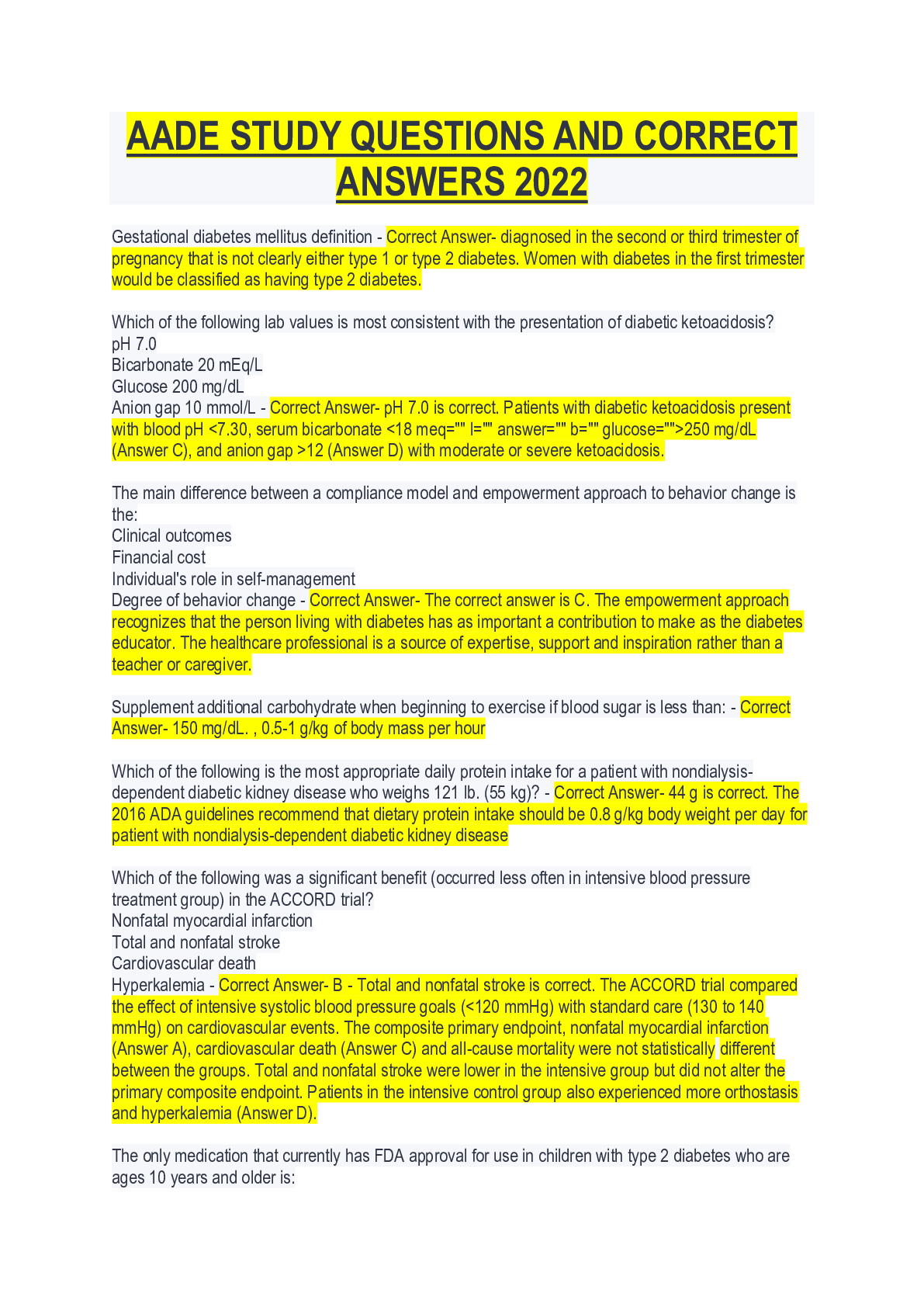
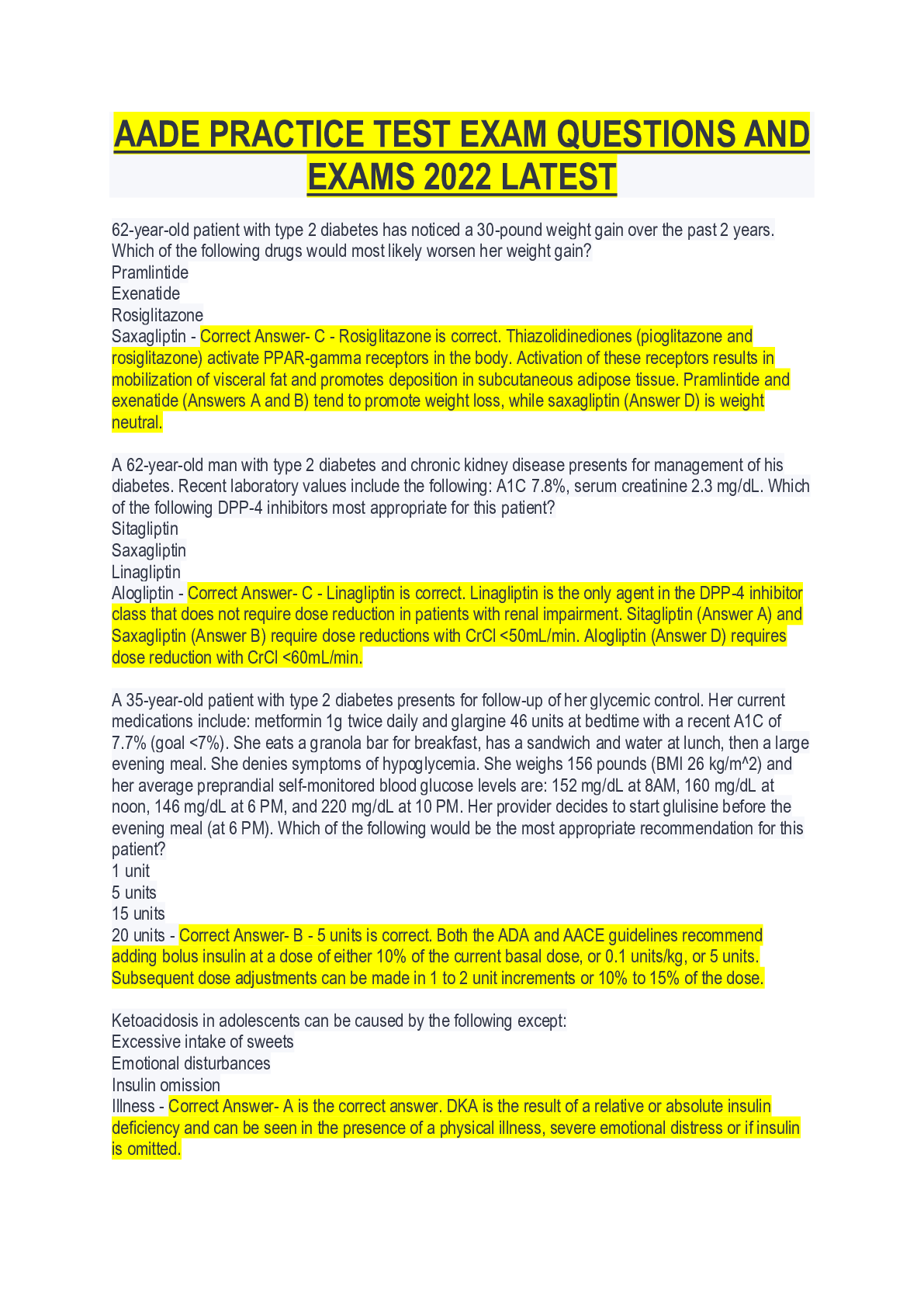
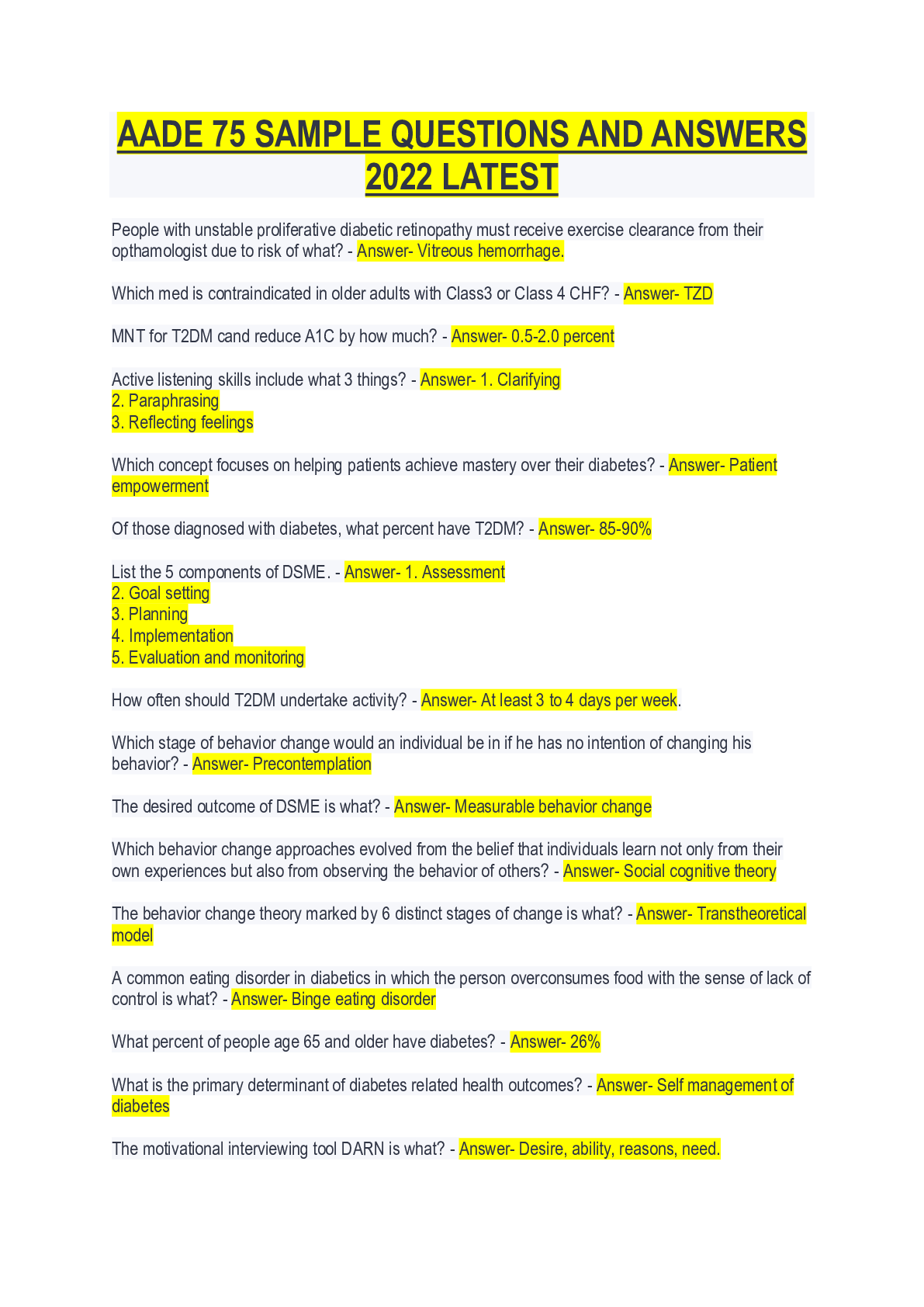


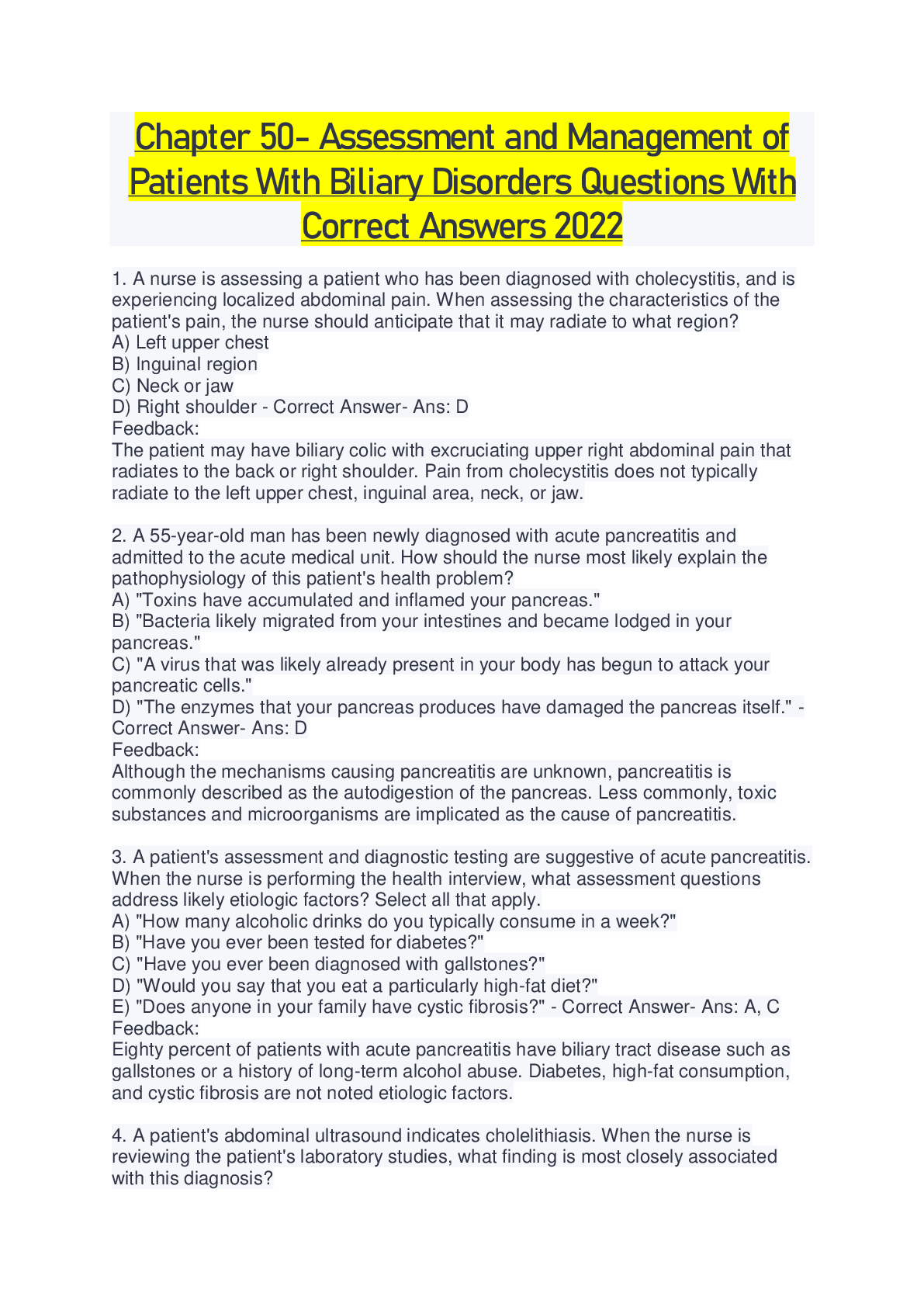
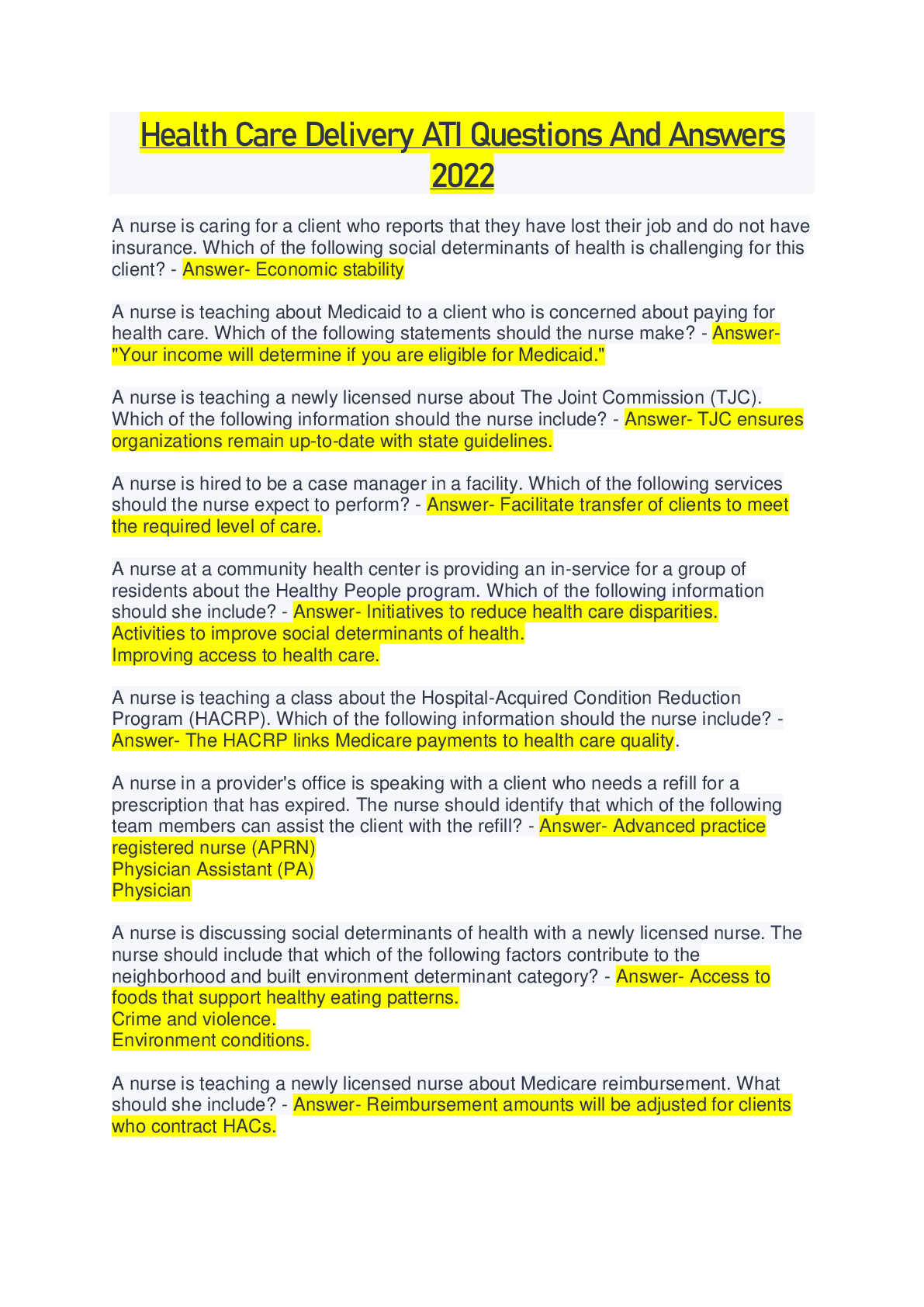

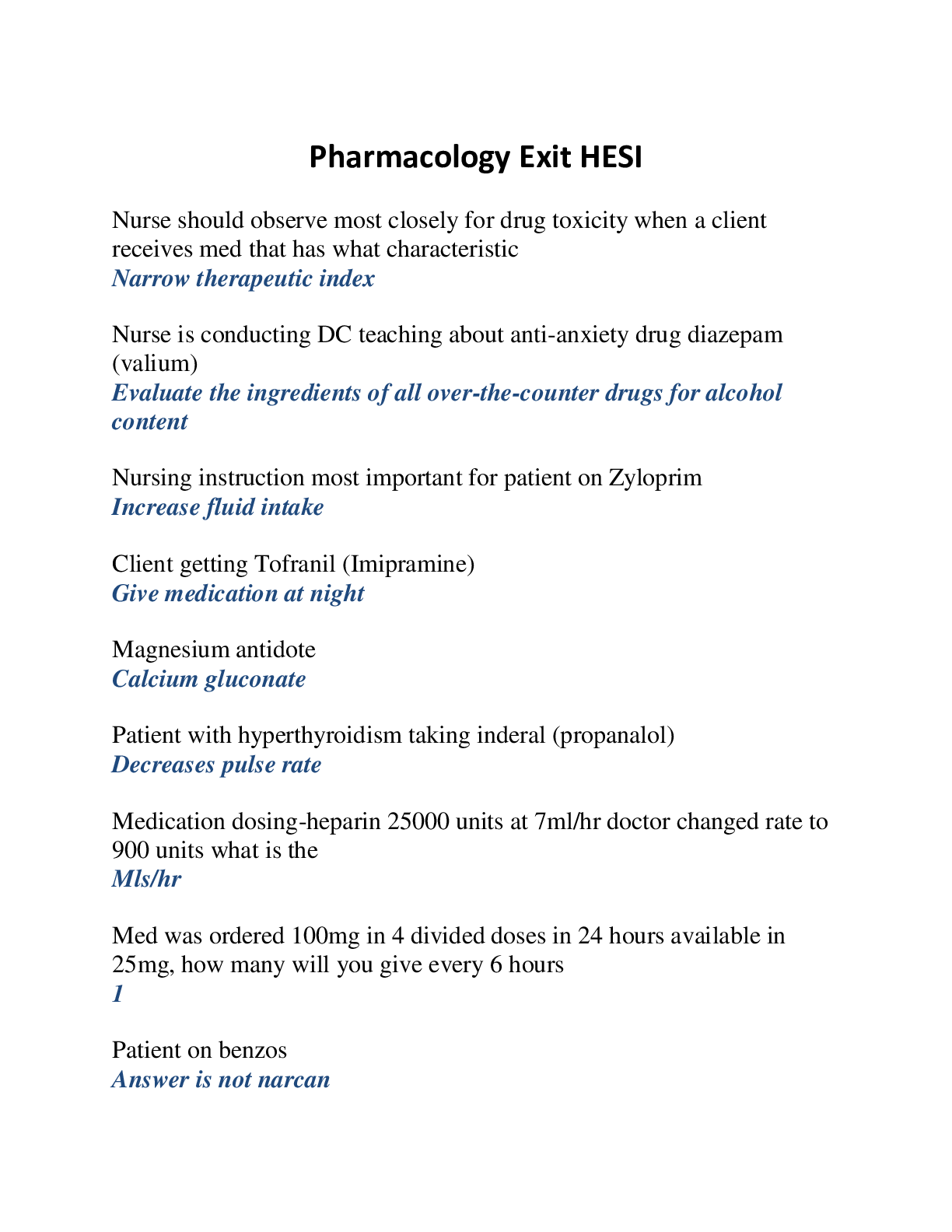
.png)
, 100% Correct, Download to Score A.png)
, 100% Correct, Download to Score A.png)
, 100% Correct, Download to Score A.png)
, 100% Correct, Download to Score A.png)
.png)
, Correct, Download to Score A.png)
, All Correct, Download to Score A.png)
, All Correct, Download to Score A.png)

